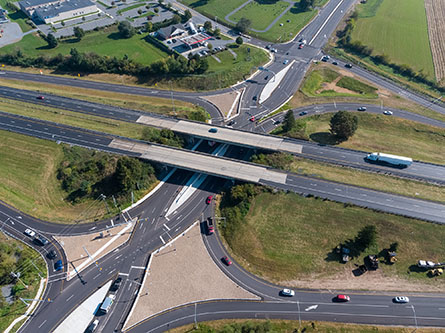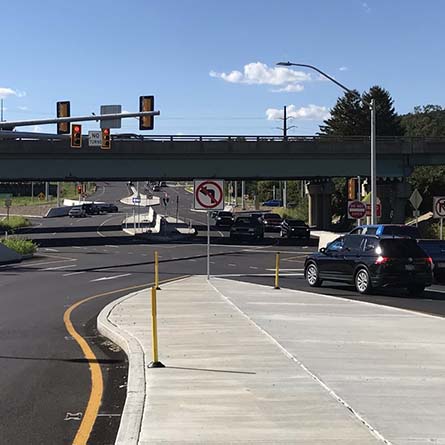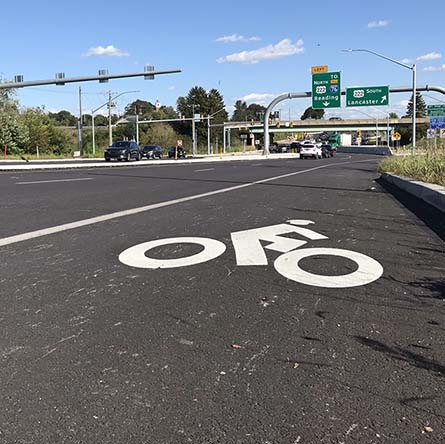SR 322/222 Diverging Diamond Interchange. Lancaster County, PA.
As a result of comprehensive alternatives analysis, WRA selected an innovative interchange design. The primary goal of the project was to improve safety, mostly due to left-turns within the corridor. Additionally, WRA set goals to maintain or improve traffic operations and multi-modal accommodations. This interchange design eliminates the need for left-turning vehicles to cross the paths of approaching through vehicles by shifting cross street traffic to the left side of the street between the signalized crossover intersections. The DDI improves the operations of turning movements to and from the freeway facility (e.g. SR 222) and reduces the number of vehicle-to-vehicle conflict points compared to a conventional diamond interchange. The project included accommodations for pedestrians, bicycles, and horse and buggies for the local Amish community.



Services Performed
Project Highlights
Highways/Roadways
WRA’s design ensured that large vehicles could make all movements, and the unique roadway geometry promoted the “correct” path for vehicles to travel through the interchange safely. The vertical clearance under SR 222 was increased to meet standards by lowering SR 322.
Traffic
Due to the closer proximity of the DDI crossover intersections, progression between both crossovers is critical to operations and one traffic signal controller was utilized to control both crossovers. Traffic signal timings emphasized queue management and progression for critical interchange movements.
Multi-Modal Accommodations
Due to the presence of a large Amish community, sidewalks were included through the project limits along with a shoulder to accommodate bicyclists and horse and buggy traffic. Radar detection zones were included in shoulders to detect horse and buggies.
Public Outreach/Education
WRA held several meetings with public officials, the general public, and the Amish community. These meetings were held to gain public support for the project. The Amish community expressed their gratitude for being included in the process.
